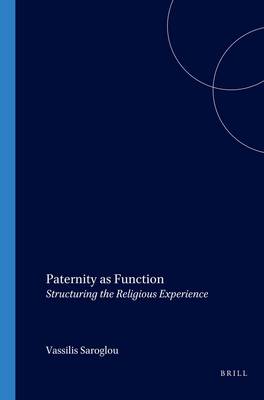
- Afhalen na 1 uur in een winkel met voorraad
- Gratis thuislevering in België vanaf € 30
- Ruim aanbod met 7 miljoen producten
- Afhalen na 1 uur in een winkel met voorraad
- Gratis thuislevering in België vanaf € 30
- Ruim aanbod met 7 miljoen producten
Zoeken
Omschrijving
Faced with the contemporary proliferation of a "religion of emotional communities" and the multiplication of gurus, spiritual directors and masters, the psychologist of religion should question the impact of the paternal function on the structuring of religious experience. This question is examined here within the context of ancient monasticism and on the basis of ascetic sources (mainly the Ladder of John Climacus, 7th c.), as well as by means of the analysis of rituals such as baptism and monastic profession. The author demonstrates that the spiritual father refers to paternity as function, and that this function is both structural and structuring with respect to religious experience. It is also examined how this crossroads-concept of fatherhood is linked to other psychic realities such as the maternal dimension of religious desire and the role of the community, the relations between the real, the imaginary, and the symbolic, the paternal uncertainty, the articulation of the mystical desire with the Law, and the control of sexuality. This study shows the importance of this function for bringing together structure and development in the religious experience and indicates the risks of this paternity for a religious pathology.
Specificaties
Betrokkenen
- Auteur(s):
- Uitgeverij:
Inhoud
- Aantal bladzijden:
- 204
- Taal:
- Engels
- Reeks:
- Reeksnummer:
- nr. 10
Eigenschappen
- Productcode (EAN):
- 9789042015944
- Verschijningsdatum:
- 1/01/2001
- Uitvoering:
- Paperback
- Formaat:
- Trade paperback (VS)
- Afmetingen:
- 150 mm x 220 mm
- Gewicht:
- 353 g

Alleen bij Standaard Boekhandel
+ 180 punten op je klantenkaart van Standaard Boekhandel
Beoordelingen
We publiceren alleen reviews die voldoen aan de voorwaarden voor reviews. Bekijk onze voorwaarden voor reviews.








